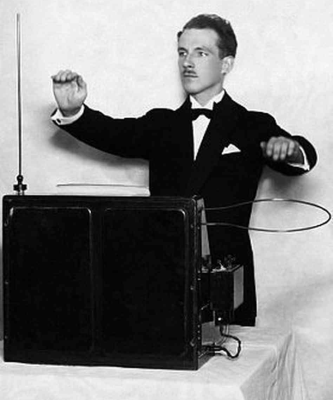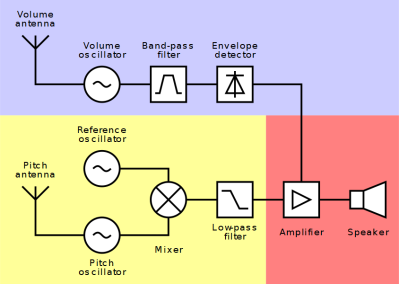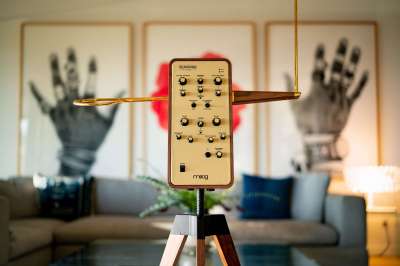The Theremin is 100 Years Old; Celebrating the Spookiest of Instruments
It wouldn’t be October without Halloween, and it wouldn’t be Halloween without some spooky music. There’s no instrument spookier than a Theremin, which also happens to be one of the world’s first electronic instruments.

You’ve no doubt heard the eerie, otherworldly tones of the Theremin in various 1950s sci-fi films, or heard the instrument’s one-of-a-kind cousin, the Electro-Theremin in “Good Vibrations” by the Beach Boys. The Theremin turns 100 years old this month, so we thought we’d take a look at this strange instrument.
One hundred years ago, a young Russian physicist named Lev Sergeyevich Termen, better known as Leon Theremin, was trying to invent a device to measure the density of various gases. In addition to the standard analog needle readout, he wanted another way to indicate the density, so he devised an oscillator whistle that would change pitch based on the density.
He discovered by accident that having his hand in the field of the antenna changed the pitch of the whistle, too. Then he did what any of us would do — played around until he made a melody, then called everyone else in the lab over to check it out.
Theremin soon showed his device to Lenin, who loved it so much that he sent Lev on a world tour to show it off. While in New York, he played it for Rachmaninoff and Toscanini. In fact you can see a video recording of Leon playing the instrument, a performance that’s more hauntingly beautiful than spooky. In 1928, he patented the Theremin in the United States and worked with RCA to produce them.

How it Works
Sales never really took off, partially because of the Great Depression, but largely because it’s so hard to get a nice sound from it. The instrument was touted as being easy to play, because you really do just wave your hands in the air to play it. But the truth is that your hands must be placed precisely to avoid terrible squawking sounds. The Theremin is quite difficult to master, and few have done it.
Inside the Theremin are a pair of circuits — one to control pitch, and the other to control volume. The pitch circuit uses two tuned oscillators to produce sound. One is fixed, and the other is variable and connected to a vertical antenna. Sound is produced when the player’s hand enters the electromagnetic field around the antenna. The frequency produced by the players hand is subtracted from the reference frequency of the fixed oscillator in a process called heterodyning. The difference between the two frequencies is then amplified and sent through a speaker. The volume circuit is a single oscillator connected to a horizontal loop antenna. As the player’s hand gets closer to the antenna, the volume goes down, which makes it easy to chop the sound into individual notes.

Theremins are still being made today by Moog, and many of them have more bells and whistles that make them sound more complex compared to the first Theremin, which had a sine wave sound to it. One of the best and most expressive Theremin players was Clara Rockmore, and Moog is honoring her by releasing a limited edition Theremin this month. That’s Clara in the header image.
Things didn’t work out so well for Leon Theremin. In 1938, he was kidnapped and taken back to Russia by the KGB. He spent time in a prison camp and was later forced by the government to create a bug to spy on the United States. Theremin returned to the US in 1991 at the age of 95 and gave several concerts. He died in Moscow two years later.
Leon Theremin would likely be pleased to see how many spinoffs his invention has spurred. Here’s to 100 more years of spooky, ethereal music. Take a deep dive into how the instrument works and where the art is today with this interview with Carolin Eyck.
Thanks for the tip, [Qes]!
Main image via Atlas Obscura
from Blog – Hackaday https://ift.tt/3eaF9Ws
Comments
Post a Comment